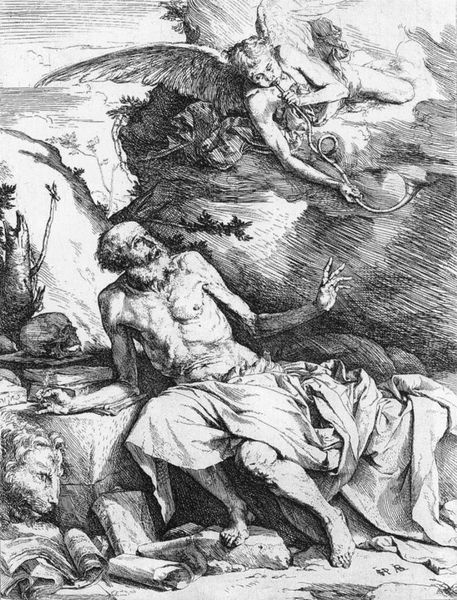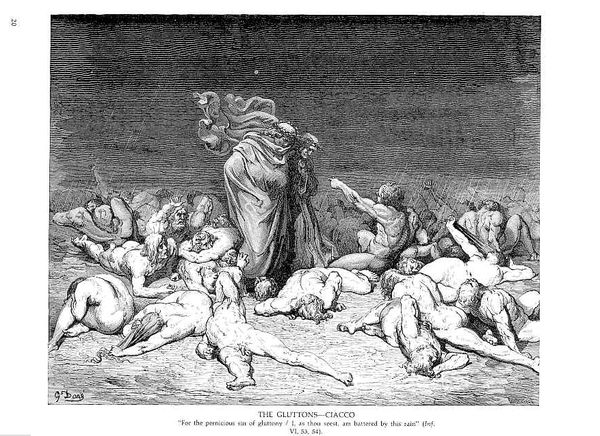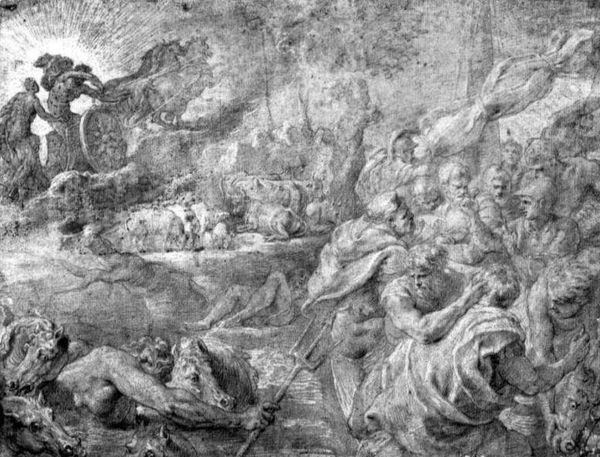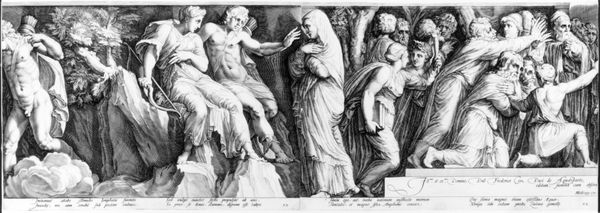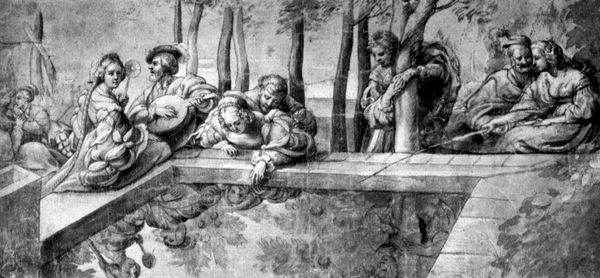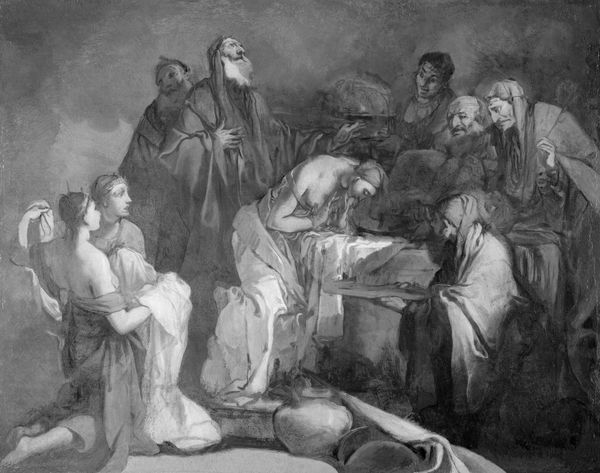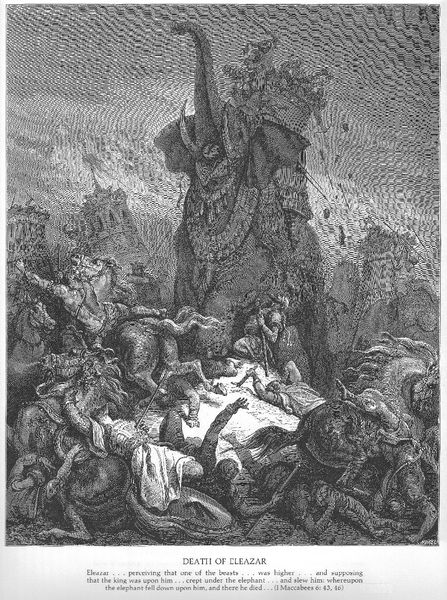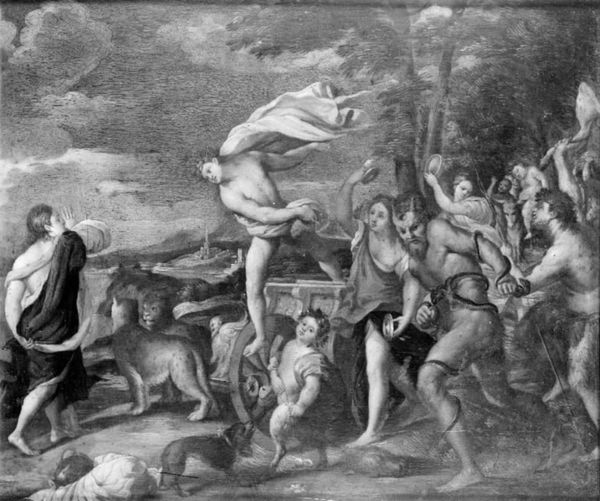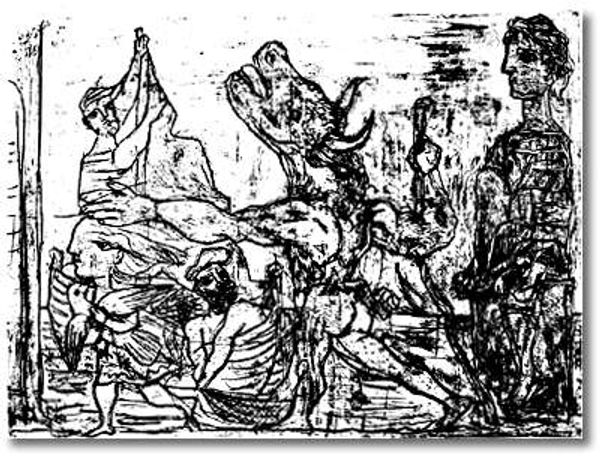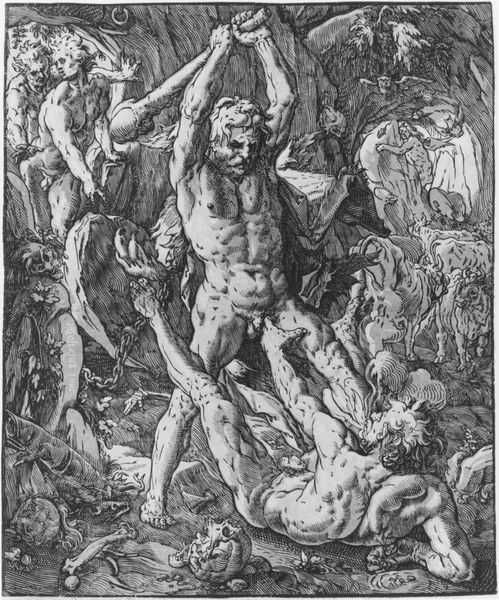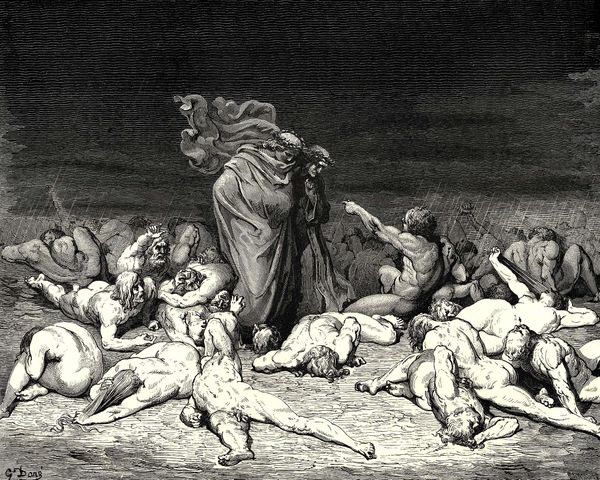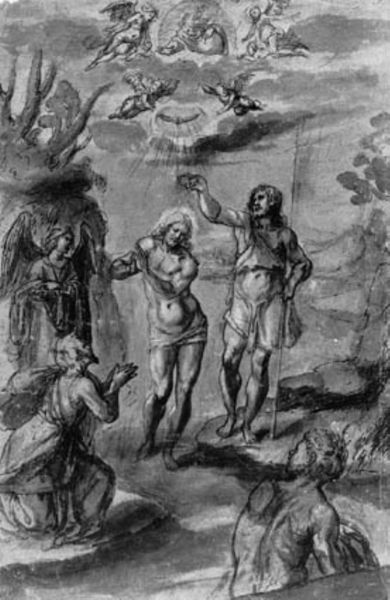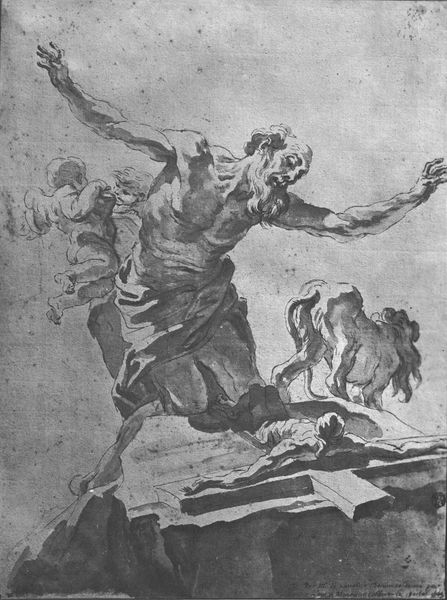
drawing, print, etching, engraving
#
drawing
#
narrative-art
# print
#
etching
#
charcoal drawing
#
mannerism
#
figuration
#
charcoal art
#
christianity
#
history-painting
#
engraving
#
monochrome
Dimensions: 33.1 x 24 cm
Copyright: Public domain
Editor: Here we have Parmigianino's "Deposition," an etching rendered in monochrome. The figure of Christ is so forlorn, and the etching is so raw. What stands out to you in terms of the broader historical or cultural implications? Curator: The piece exemplifies Mannerism, a style known for its artificiality and exaggeration which grew in popularity during a time of considerable religious and political upheaval. Parmigianino's "Deposition" can be interpreted not just as a biblical scene, but also as a reflection of the anxieties permeating society, questioning traditional artistic and religious authority. Editor: It's fascinating to consider the "Deposition" as an embodiment of anxiety rather than just a religious scene. So, would the contemporary audience view this as politically charged? Curator: It's difficult to say definitively what Parmigianino's intentions were, however, it is evident in the stylistic choices such as elongated figures and crowded composition. He would've understood these depictions challenged High Renaissance ideals, potentially reflecting his skepticism towards institutions like the church. How does the presentation, through printmaking and etching, affect the viewing experience? Editor: The detailed cross-hatching gives the piece this frenetic energy. That the image could be reproduced, made widely accessible. I suppose that's powerful. Curator: Precisely. Dissemination of such imagery had clear political implications, disrupting the singular authority previously held by painted altarpieces within established religious settings. Considering that, how does this influence your understanding? Editor: It's much more subversive than I initially realized, now understanding it circulated among potentially critical audiences. Curator: Exactly. It reframes how we view not just religious art, but the purpose art had during social transformations. Editor: I'll definitely view the work of this era in a different light, recognizing potential societal critique, consciously or unconsciously expressed through this dissemination and art style. Thanks!
Comments
No comments
Be the first to comment and join the conversation on the ultimate creative platform.
